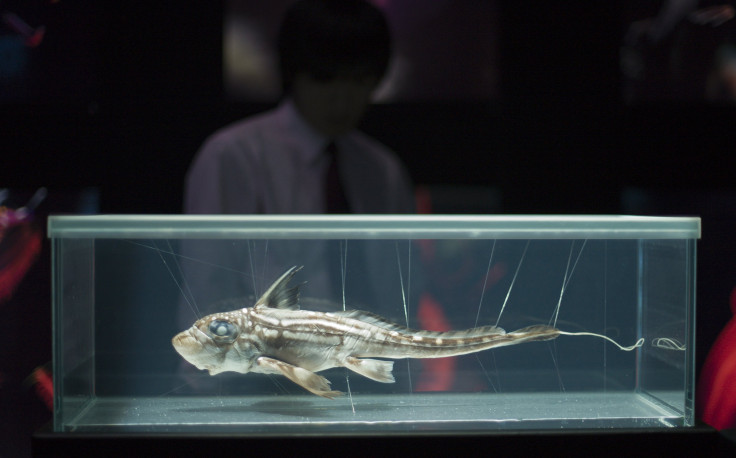What Is The Deep-Sea Ghost Shark? See Fish For First Time After Scientists Record Video

One of the most elusive creatures on the planet — and one that's even older than the dinosaurs — was captured on video by scientists and researchers from the Monterrey Bay Aquarian Research Institute in California when they filmed the deep-sea ghost shark, National Geographic reported Thursday.
Officially called chimaeras, but also known as the rat fish, spookfish or even rabbit fish, ghost sharks have roamed the Earth’s seas at of depths 8,500 feet. They are distant relatives of both sharks and rays, but they aren't nearly as big as some of their prehistoric brethren, reaching nearly 5 feet in length. They also possess retractable penises on their heads.
The discovery was technically made seven years ago, but researchers couldn’t confirm whether or not what they were seeing was an actual ghost shark. In 2009, the institute sent a remotely operated vehicle (ROV) down as far as 6,700 feet off the coasts of California and Hawaii, and they made the find by sheer chance.
“Normally, people probably wouldn’t have been looking around in this area, so it’s a little bit of dumb luck,” program director of the Pacific Shark Research Center at Moss Landing Marine Laboratories Dave Ebert told NatGeo.
The video captured was originally part of research by the California Academy of Sciences in pursuit of a new species of ghost shark off the coasts of southern California and Baja, Mexico, Science Daily reported.
Ebert’s team was brought in to analyze the video. They believe it’s a pointy-nosed blue chimaera, which are usually found around Australia or New Zealand. If true, it could be the first time a ghost shark has been discovered roaming around the Northern Hemisphere.
However, the researchers require a DNA sample in order to reach a solid conclusion — something that will prove difficult since chimaeras need to stay well below the ocean’s surface in order to live.
“The only way we can collect these species is by trawling,” marine biologist Dominique Didier said. “So, it's like a snapshot. Imagine trying to understand species distribution in Lake Michigan and you sample the lake using a Dixie cup. Trawling the ocean is like that.”
See the ghost shark for the time below.
© Copyright IBTimes 2024. All rights reserved.




















